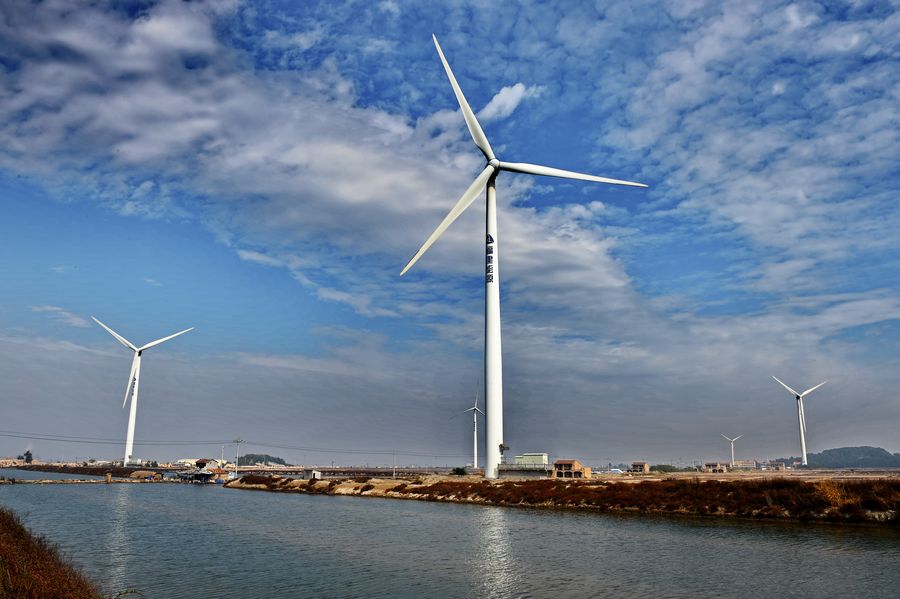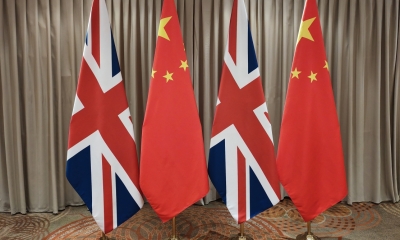China’s Carbon Neutral Pledge Is a Game Changer

The pressure is on for China to deliver on its promise to become carbon neutral by 2060, but how will the country deliver on such an ambitious proposal?
Chinese President Xi Jinping’s surprise announcement at the UN General Assembly that China will “aim to achieve carbon neutrality before 2060,” has been heralded as the most significant announcement in global climate change policy for the past five-years.
Having become the world’s largest polluter of greenhouse gasses – accounting for more than a quarter of the world’s emissions – the government’s decision to phase out coal, oil and gas by the middle of this century is one that will have a significant impact on the worlds battle against global warming,as the target is five to ten years earlier than what set in the Paris Accord which envisages global carbon neutrality by 2065-2070.
According to Climate Action Tracker (CAT), China’s decision has the potential to lower global warming projections by between 0.2 to 0.3 degrees Celsius, the single biggest reduction measured since countries signed the Paris Agreement in 2015. It could theoretically cause a drop in global temperatures from a predicted 2.7 degrees Celsius by 2100 to 2.4 to 2.5 degrees Celsius, a significant move if governments are to fulfill the proposals set out in the 2015 agreement.
As a country that is abundant in coal resources, China must now embark on one of the most ambitious projects in its existence, and will have to make considerable changes to nearly all aspects of its economy, infrastructure and consumer habits. It begs the question: Just how is it going to pull it off?
Renewables in, non-renewables out
Although Xi’s speech was light on figures, with more details likely to be explained in China’s 14th five-year plan, there are immediate areas where significant changes are likely to occur.
One of the biggest changes will undoubtably be in a more vigorous and proactive push away from fossil fuels over the next 10 years. Fossil fuels will need to amount for just 25 percent of China’s energy capacity if the target is to be met, according to Bernstein Research, with oil – and in particular coal – in line for serious reductions in use.
Coal usage as an energy source has been in decline in China since the heydays of the 1980s, dropping from over 90 percent to current levels of 58 percent. There has also been an important shift in investment of “clean coal”, which releases fewer toxic gases. That being said, if the government is to hit its 2060 targets, coal use will have to reduce even further. Bernstein is reporting that it needs to drop to nearly zero by 2030, but with new projects such as the 100GW of coal power currently under construction, and a further 150GW in the planning stages, it will not be an easy transition.
It will require a massive upscale in renewable and nuclear energy production, something that is already well underway. According to the UN Environment Programme, China has invested $758 billion in renewable energy capacity between 2010 and mid-2019, more than any other country or region. Non-fossil fuels account for nearly 15 percent of China’s energy capacity, rising by 9.5 percent to 750 gigawatts (GW) last year. China added 3.88 GW of hydropower capacity, 25.74 GW of wind capacity and 30.11 GW of solar capacity in 2019 according to the National Energy Administration (NEA).
Solar capacity, in particular, is experiencing rapid expansion, with China home to over a third of all solar panels, and a number of leading solar panel manufacturers. Despite the impact of COVID-19, China still installed 4GW of solar-power in the first quarter of this year, and could be very beneficial in reducing carbon emissions from homes – which account for 20 percent of China’s carbon emissions – according to Xie Zhenhua, China’s special adviser for climate change affairs.

Banks and consumers have an important role to play
Further investment in green-technology will be essential if it is to play a bigger role, with Xie reporting the government has set aside green financing worth $309 billion to help with this. There will also need to be a “greening” of the financial system, with greater encouragement on banks to fund greener projects. The People’s Bank of China (PBOC) is currently looking to expand the establishment of Green Finance Pilot Zones that would help foster green finance and innovation, with six zones currently undergoing trials.
Consumers will also have to play their part by becoming more “environmentally conscious”. There is already an increasing movement growing within China to recycle and reduce meat consumption, two things that are heavily carbon intensive.
Rejecting diesel-guzzling cars for environmentally friendlier electric vehicles will also be important, and in this regard, as the largest EV market in the world, Chinese consumers are at an advantage. With over fifty-percent of the world’s EV’s in China, Chinese consumers have a competitive market to buy from, with a range of domestic and international EV giants such as Tesla to choose from. It is a market that is predicted to grow further according to BloombergNEF, with more EV’s expected on the road than cars with the internal combustion engine by 2030.
If fossil fuels don’t fall fast enough, China could also explore further carbon capture and storage methods to help offset its carbon emissions. China has had success with forestry carbon stores, with the “Great Green Wall” helping suck in thousands of tonnes of carbon dioxide a year. In the Inner Mongolian county of Horinger, 3.3 million trees have been planted covering an area of over 2,500 hectares, and are expected to fix 220,000 tonnes of carbon from the atmosphere over the next 30-years.
Challenging but achievable
The challenge of reaching carbon neutrality in the next forty-years is one of the most ambitious targets China has ever made. But it can take confidence from earlier projects related to lowering emissions, such as meeting its 2020 carbon intensity target three years ahead of schedule, as a sign that it is achievable.
China also has a habit of coming through on big ambitious targets, especially when there is strong political will behind it, having eradicated absolute poverty and improved living conditions for all low-income families earlier this year.
This announcement, having been made on the biggest international stage by President Xi, certainly fits that criteria, and means the pressure will now be on China to deliver on its promise.
 Facebook
Facebook
 Twitter
Twitter
 Linkedin
Linkedin
 Google +
Google +







